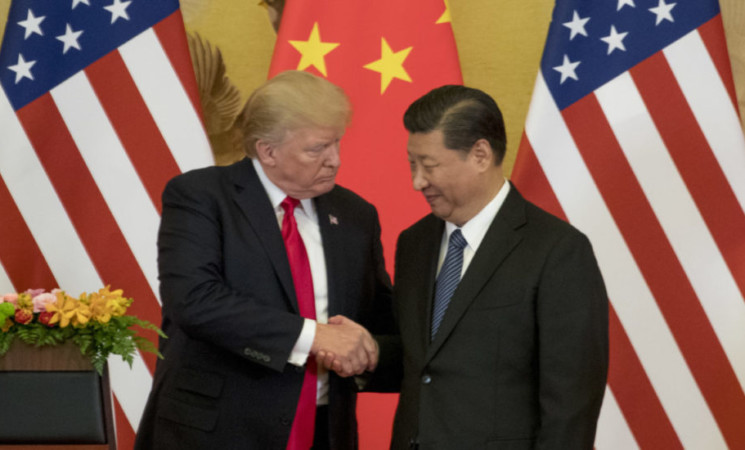"US-China Dynamics in a Global Crisis: Opportunities and Constraints"
Executive Summary
Click here to download the full PDF report.
During the week of April 6, 2020, the NCAFP convened a set of video teleconferences (VTCs) with a small group of authoritative participants from the US and China—both senior scholars and former officials—to discuss challenges and potential opportunities in bilateral relations.
The emergence of the COVID-19 global pandemic and accompanying worldwide economic crisis, which would normally be an occasion for bilateral and multilateral coordination and cooperation on a global humanitarian challenge, has not engendered more communication between the US and China on these issues, but has in fact, exacerbated rhetorical sparring and mutual suspicion and hostility.
Finding avenues for coordination and enhancing communication is in the best interests of both countries and the world. Lives may well depend on the ability of the two sides to minimize conflict and maximize cooperation. The top priority, therefore, should be sharing and adapting best practices to manage medical care for the infected, to slow or stop the spread of the disease, and to restart and maintain global economic activity in this period of disruption.
Enhancing direct communication at all levels—government to government, expert to expert, and people to people—is urgent and necessary to capture important relevant experiences and to secure needed materials and capabilities.
Dissecting the mistakes and missteps of policy reactions to the initial outbreak is important in the long-term, but it cannot be accurately assessed until the virus is under control worldwide. There are still many unknowns. The perceived gloating of each side over the other’s difficulties in meeting this crisis has already damaged public perceptions in each country and distracted from the obvious priorities of fighting this deadly disease and stemming the bleeding of our collective prosperity. There is a high risk of a further downward spiral in bilateral relations amid this crisis and the difficult domestic political environments in each country, but what we do now may establish new boundaries for bilateral cooperation in the coming decades.
It is unclear if the necessary shift in mindset to include coordination and cooperation within a broader framework of strategic competition is achievable without sustained commitment and direction from the highest levels of government. These conversations occurred shortly after a phone call between President Trump and President Xi that seemed to at least temporarily slow a sharp downward trend in rhetoric sparked by the spread of the COVID-19 virus in the first quarter of 2020. However, since then, the finger-pointing and blame game has intensified and efforts toward international collaboration have been less than successful.
Given the historic nature of the current moment, participants identified the following bold moves to meet these unprecedented challenges:
- President Trump and President Xi should convene the first-ever US-China virtual leaders’ summit, to prepare for the next G20 leaders meeting, by directing working-level coordination on the following topics:a
- Resolving disruptions in the global supply chain of essential materials and equipment;
- Research, production and distribution of the COVID-19 vaccine; and
- Coordinating medical and financial aid to the developing world.
- A virtual summit could also reaffirm existing commitments in bilateral relations, including the implementation of the phase one trade deal and the US one-China policy, as well as establish a commitment to an after-action review of the initial policy responses to the pandemic.
- A summit will not resolve the myriad competing national interests in US-China relations, nor does it need to do so. But it would be immensely helpful for each side to self-identify and announce respective commitments to shared goals, such as recovery of the global economy.
- Both sides should operate on the principle of “no surprises.” The goal should not be to dismiss or ignore strategic competition but to preserve room for simultaneous coordination or cooperation by conducting competitive activities in a transparent manner.
-
- China should identify and connect a counterpart to the US INDOPACOM Commander to facilitate communications on military issues.
- Both sides can make use of existing sister cities relationships to assign responsibilities for assisting new outbreak areas or hotspots. This could also help unblock bottlenecks in the medical equipment and services supply chains.
- Should both locations be successful in managing their respective outbreaks, the pairs can team up to “adopt” other countries or localities around the world, creating a global web of cooperative grassroots exchanges.

